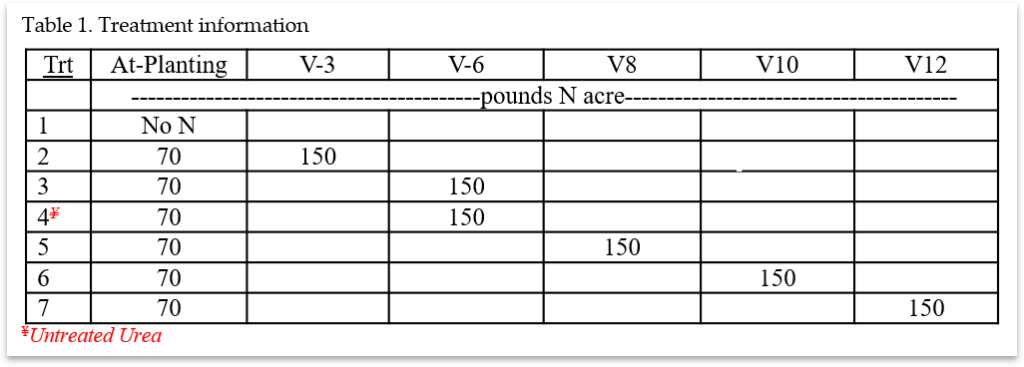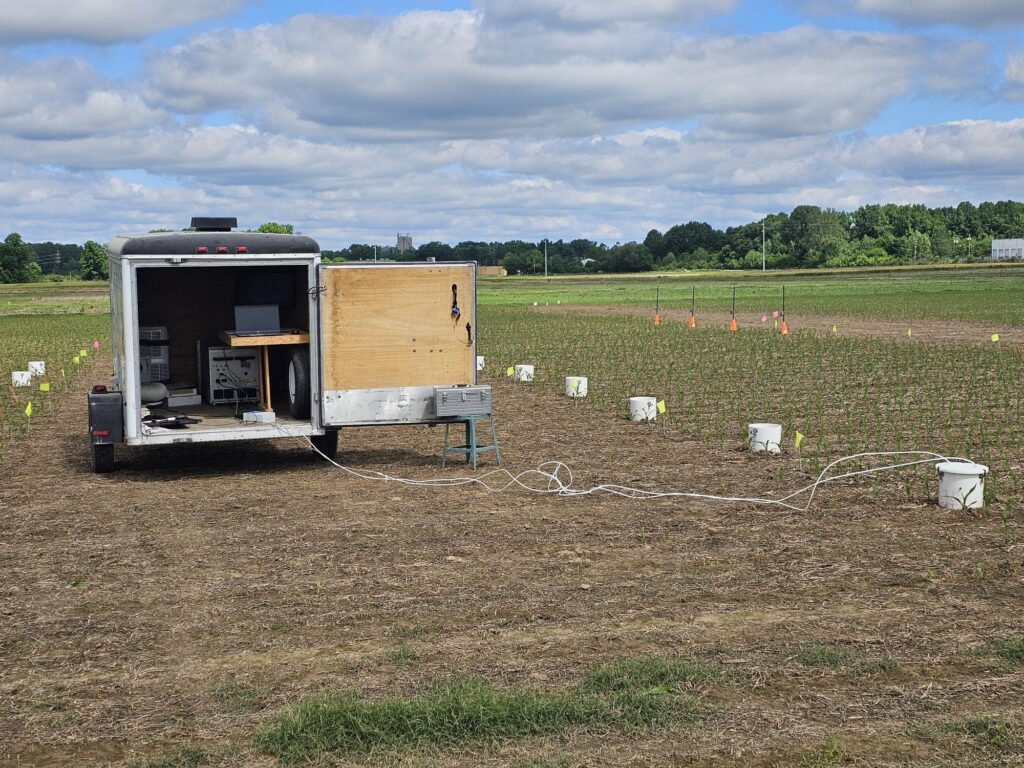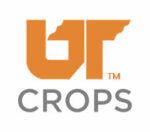Nitrogen Mass Balance Approach to Evaluating Sidedress Timings in Dryland Corn Production
Research was funded by the Tennessee Corn Promotion Board
Nutifafa Adotey, Assistant Professor & Soil and Nutr. Magt Specialist Angela McClure, Professor Emeritus & Corn and Soybean Specialist Xinhua (Frank) Yin, Professor & Cropping System Scientist, University of Tennessee
Introduction
In Tennessee, the current recommendation is to split apply one-third at planting (shortly after emergence) and then sidedress the remaining N for dryland corn production. Delaying N fertilizer beyond the recommendation application window using non-EENF fertilizers can reduced grain yield. Enhanced efficiency nitrogen fertilizers (EENF), recognized as a promising N management tool, reduces N loss, optimizes N uptake, improves crop productivity, maximizes profits, and reduces environmental pollution across various cropping system. Considering the relatively slower release of N from EENF compared to its non-EENF, delaying its application beyond V6 growth stage may result in severe yield penalty. Knowing how long EENF fertilizer application can be delayed without substantial yield penalty may be a valuable in N management decisions during wet years. Currently, the quantifiable metrics used to evaluate EENF, including gas emissions, agronomic traits, and yield can easily overlook some potential benefits of these N management tool. A nitrogen mass balance approach presents a comprehensive approach to evaluate the performance of EENF applied at varying sidedress timing.
Research Methodology
A dryland field was planted with Dekalb DKC 66-06 at the West Tennessee Research & Education Center in Jackson, TN to achieve a final stand of about 32,000 plants per acre. After emergence, 70 lbs N/acre as urea was broadcast onto the fertilized plots. Side-dress N was applied as urea at the respective growth stage as indicated in Table 1 for a plot total of 220 lbs N/acre. Plots were four rows wide x 30 feet long and each treatment was replicated four times in a randomized design. Soil samples were analyzed for inorganic N, soil texture, soil pH, organic carbon and N, soil organic matter, Mehlich 3 extractable nutrients. We analyzed tissue nutrient concentration for whole plant parts (leaves, stalk, cob, and grain) at maturity growth stages to compute for N uptake. We measured nitrous and ammonia gas emissions from EENF using the chamber method described by Parkin & Venterea, (2010) and semi-open, static chamber method described by Dillion et al. (2012), respectively. Ammonia and nitrous oxide chamber were installed in the center row in the middle of each plot. Ammonia loss will be sampled every other day for the first 10 days after fertilizer application and then twice a week until 28 day after fertilization. Nitrous oxide was collected once a week after fertilizer application.







